GARDEN
9 Beautiful Plants That Thrive in Humid Areas
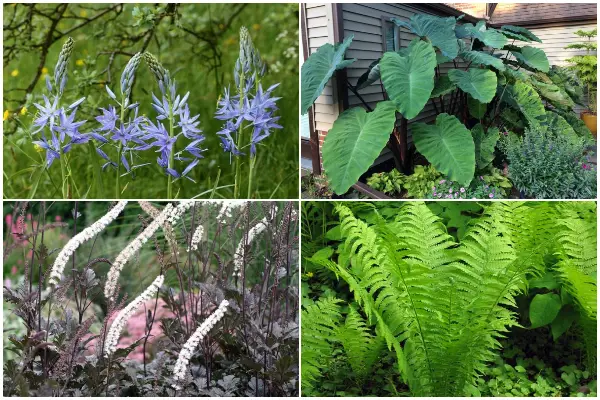
When it comes to the planting work, we will think about soft and moist soil as it is ideal conditions for the plant’s growth. In fact, you also expand the area of planting in a humid area in the garden. There are some plants that grow well in wet and humid environments without caring much. As such, if you don’t have a yard that gets a well-drainage area, don’t give up! Growing some of the 9 Beautiful Plants That Thrive in Humid Areas will fill up bare lands in your garden.
By displaying beautiful leaves or lovely blooms, they will add stunning looks to your landscape while attracting pollinator species coming to visit your garden.
1. Amethyst Pearl Phlox
 Image source: waltersgardens
Image source: waltersgardens
Amethyst Pearl Phlox grow best in zones 3 to 8, the amethyst pearl phlox is a plant that has delicate leaves and is known for its attractiveness to many species of butterfly. If you’re looking to improve the branching of this plant, pinch in the early season. In the cooler seasons, just mow the tops off completely, and they’ll be ready for the warmer months.
2. Pickerelweed
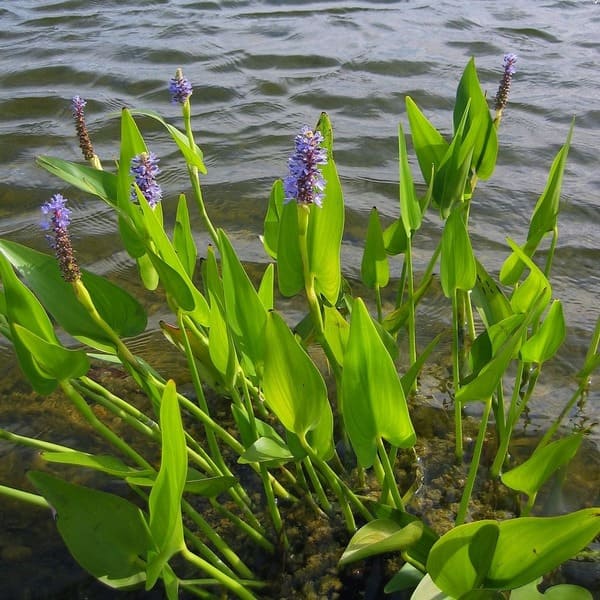 Image source: plants.ces.ncsu.edu
Image source: plants.ces.ncsu.edu
Pickerelweed can grow freely in standing water, pickerelweed can also grow as high as four feet. Doing best in zones 3 to 10, this plant with an iconic violet flower really thrives when it gets a lot of direct sunlight. This is another plant that’s a hit with pollinators, and you can expect to see blooms from early summer to mid-fall. These plants love to grow, so to halt their spreading, grow these in containers.
3. Blue Camassia
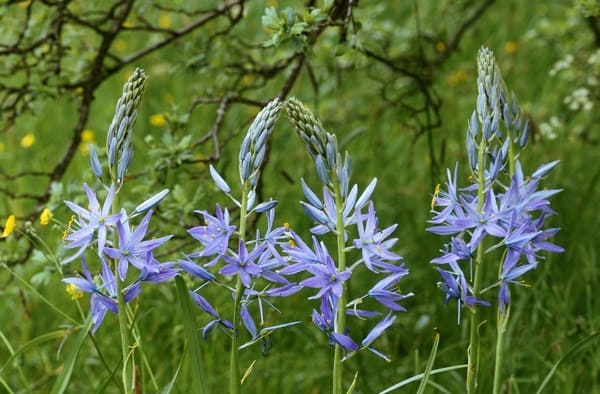 Image source: sarahraven
Image source: sarahraven
Also known as the American hyacinth, grows best in zone 3 to 9. It is a particularly strong species that can keep your garden pests at bay. The petals on the flower are somewhat spiked, and the leaves surrounding the blooms are resistant to plant-munching pests like deer and rabbits. Despite its preference for wet soil, this plant should never be submerged, so plant it above the high water mark if you’re planting near water.
4. Elephant’s Ear
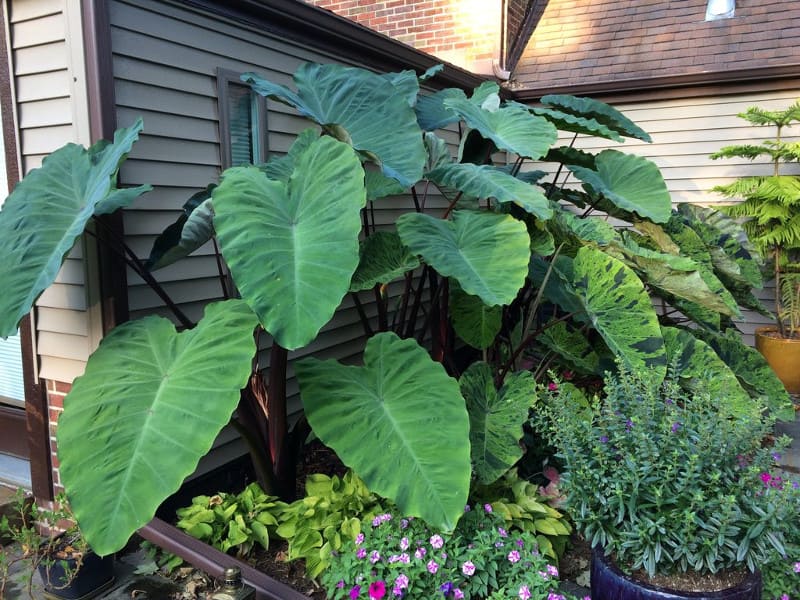 Image source: plantaddicts
Image source: plantaddicts
This plant named after an animal, this tropical perennial that reminds many of the ear of the never-forgetting pachyderm has the ability to grow upwards of six feet. If you’re going to get its optimal growth, you’re going to have to live in zones 10 through 11, but if you experience wetter soil, you’ll have no issues. If you’re going to be growing these plants in the colder climates, you can opt to pot these ear-shaped plants before the first frost until the cold has gone away.
5. Bugbane
 Image source: portlandnursery
Image source: portlandnursery
While bugbane typically has a slow growth cycle, the beautiful blooms that this plant produces are worth the wait. This plant grows star-shaped flowers that can grow very tall; in fact, it’s not out of the realm of possibility that a bugbane plant will soar over seven feet. The plant grows in zones 3 to 9, and the plant prefers wet, slightly acidic soil. If you’re going to plant some, use soil that has high organic matter content and cover it with about an inch of mulch.
6. Iris
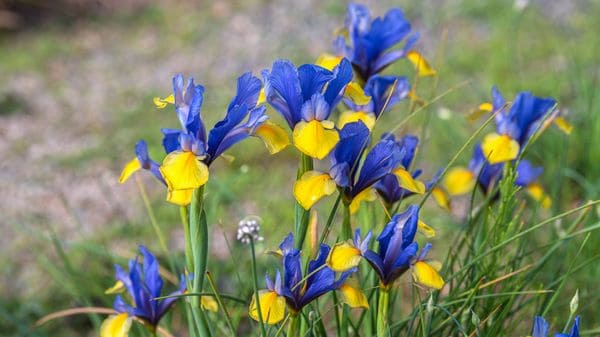 Image source: thespruce
Image source: thespruce
While most species of iris seem to do well in wetter conditions, I personally prefer the Louisiana iris, which is known for its absolute love for moisture. In fact, if you are growing in an area that’s prone to a bit of flooding, the Louisiana iris can grow safely in up to four inches of water. This plant can prosper in zones 4 to 10, and it’s known for its ability to produce blooms in a variety of beautiful colors. This is also a plant that is fairly hardy, and if conditions are right, it’ll definitely multiply.
7. Lily of the Valley
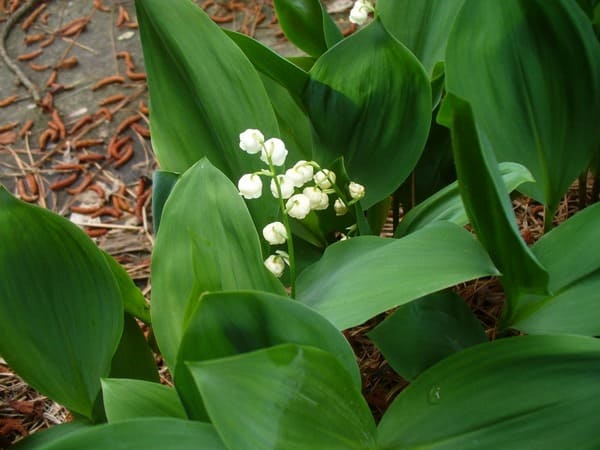 Image source: plants.ces.ncsu.edu
Image source: plants.ces.ncsu.edu
If you’re thinking of planting lily of the valley, you will find that it grows best in zones 2 to 9. Moist soil and even a little bit of standing water seems to not be an issue for the lily of the valley; in fact, in moisture, the plant seems to really thrive. The blooms produced by these plants also smell wonderful; just make sure to keep it in partial shade and plant it in the late fall, and your beautiful lilies will be ready for the warmer months.
8. Butterfly Weed
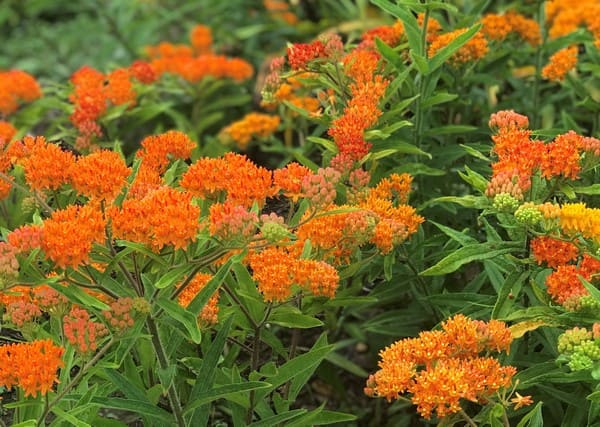 Image source: startribune
Image source: startribune
This plant is at home in zones 3 to 9 and has no problem with wet soil and environments. In addition to butterflies, these plants also attract honeybees and are well-known for their orange blooms. When you plant this weed, you can expect it to last an entire summer, and the plant also stands out due to its deer-resistance. This cousin of the milkweed is very resilient to most growing conditions – just remember to plant the seeds in the early spring.
9. Ostrich Fern
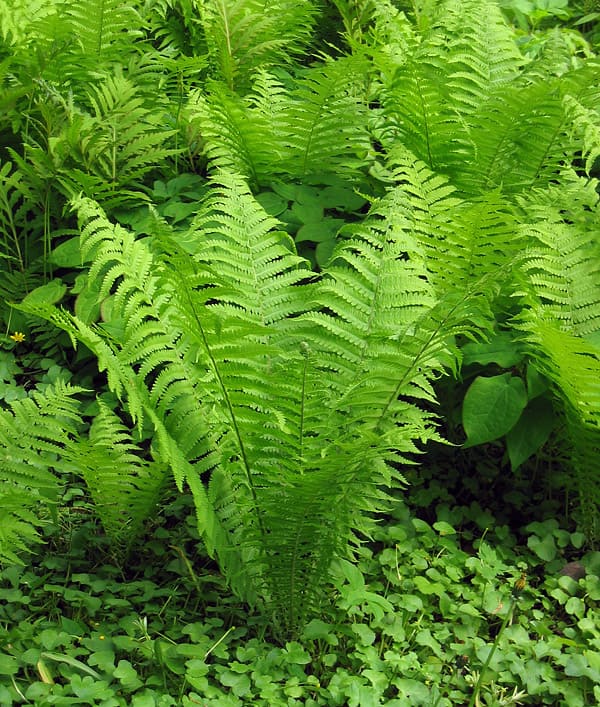 Image source: agrihunt
Image source: agrihunt
Ferns are an ever-present plant in just about all of my gardens, and the ostrich fern, which can grow hugs, has always been one of my favorites. This plant has some truly verdant leaves and is perfect for providing partial shade for many of its garden-mates. In fact, this plant can grow as large as six feet tall and thrives in zones 3 to 9. If you’re going to plant this fern, it can easily grow in most conditions, but it will do best in full to partial shade.
GARDEN
15 Houseplants That Grow Well in Vases with Water
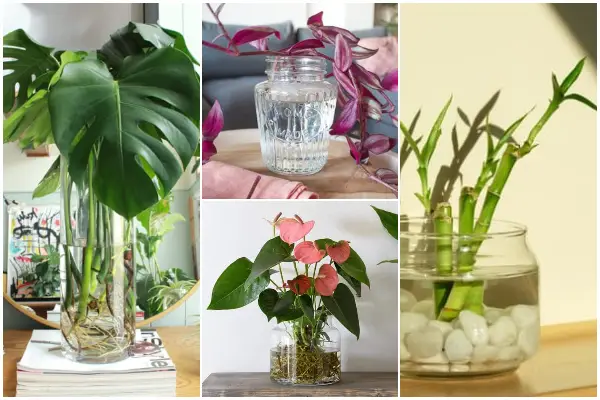
Vases are a fun way to display the beauty of flowers or propagate plants from cuttings. No need for the soil, simply immerse the nodes or the end of the stems in the water, add some decorative gravel, and you are done! They are so easy to make that everyone can create them at home, and especially your hand is always clean.
Instead of decorating flowers, check out the 15 Houseplants That Grow Well in Vases to make the living space more impressive in your own way.
1. Pothos
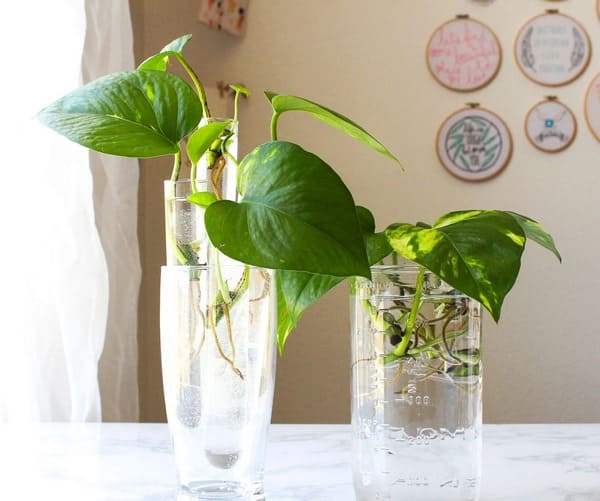 Image source: instructables
Image source: instructables
This Pothos displays heart-shaped green and white leaves making it looks stunning in decorative vases. The houseplant needs a little care and indirect light for happy growth.
2. Spider Plant
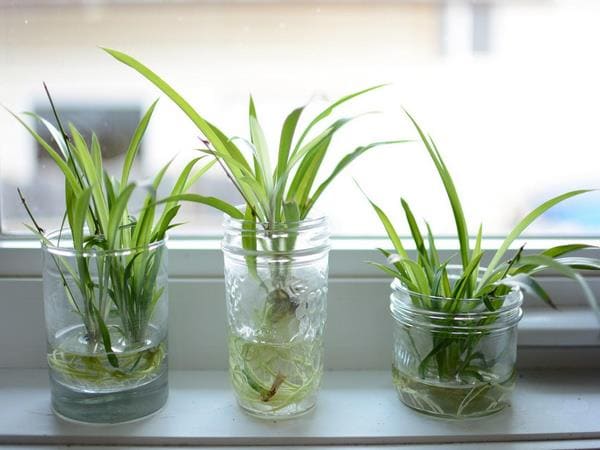 Image source: gardenmanage
Image source: gardenmanage
Spider Plant is one of the most popular houseplants. You can grow in pots in soil or in vases in water. Simply, cut off one of the plantlets, then put it in your vase.
3. Snake Plant
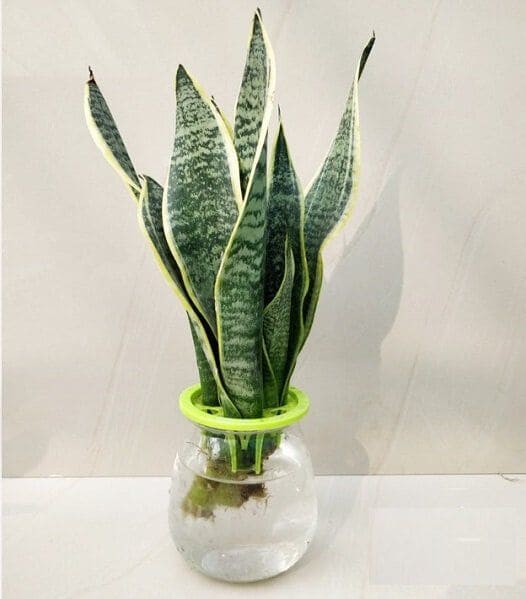 Image source: plantdecors
Image source: plantdecors
Snake Plant looks great in a transparent vase with tall variegated leaves. It is also excellent for purifying harmful toxins from the air.
4. Monstera
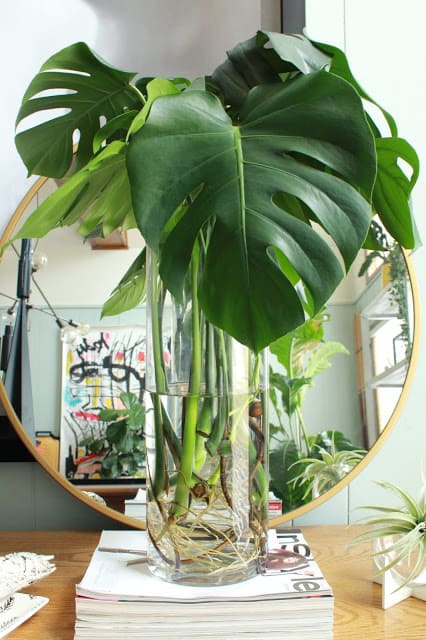 Image source: keephouseplantsalive
Image source: keephouseplantsalive
Monstera offers unique cut leaves looking gorgeous when put in a matching vase. This low-maintenance plant also grows well in the water environment.
5. Purple Heart Plant
 Image source: creativejewishmom
Image source: creativejewishmom
By providing deep purple leaves with delicate and tiny pink flowers, this Purple Heart Plant looks more beautiful in a vase.
6. Watermelon Peperomia
 Image source: kirkdamaso
Image source: kirkdamaso
This Watermelon Peperomia shows off thick and bushy foliage, making it an amazing centerpiece. The best varieties are Columbian and Watermelon Peperomia which you should choose to grow.
7. Geranium
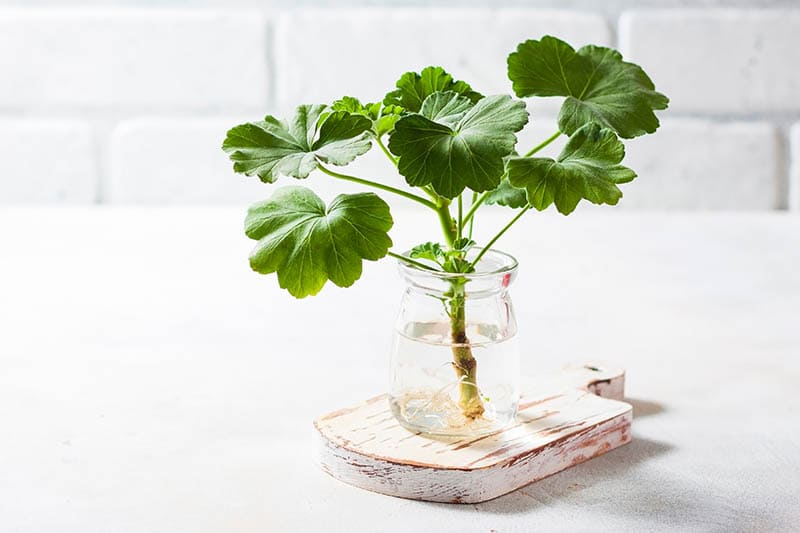 Image source: gardenerspath
Image source: gardenerspath
Geranium is a well-loved houseplant because of its easy-to-take-care properties along with its bright pink flowers. Growing it in a vase with water is a great way to start a plant from cuttings!
8. Alocasia
 Image source: carousell
Image source: carousell
Alocasia bears arrow-shaped leaves that look stunning in glass vases. It is quite easy to propagate and grows happily in indirect light.
9. Chinese Money Plant
 Image source: bonjourtangerine
Image source: bonjourtangerine
Chinese Money Plant is a compact specimen that looks impressive when kept on small tables and windowsills.
10. Wandering Jew
 Image source: lady-bella
Image source: lady-bella
This fast-growing plant brings pretty purple-colored and variegated leaves looking smashing in vases.
11. English Ivy
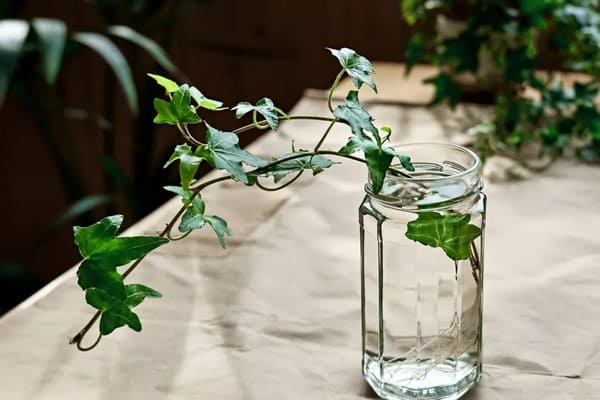 Image source: ruralsprout
Image source: ruralsprout
English Ivy is an evergreen vine with flexible stems dangling down, which makes it look quite charming in a vase.
12. Swiss Cheese Plant
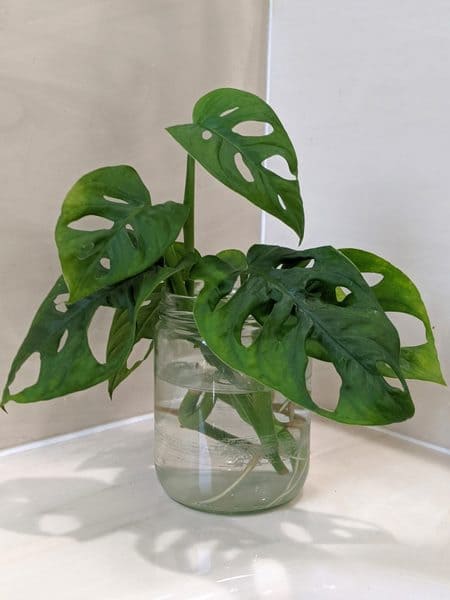 Image source: pottedpixie
Image source: pottedpixie
The leaves of this Plant have natural holes looking like swiss cheese, as the name suggests. This plant also loves climbing so you can place it near a shelf and watch it grow upwards!
13. Peace Lily
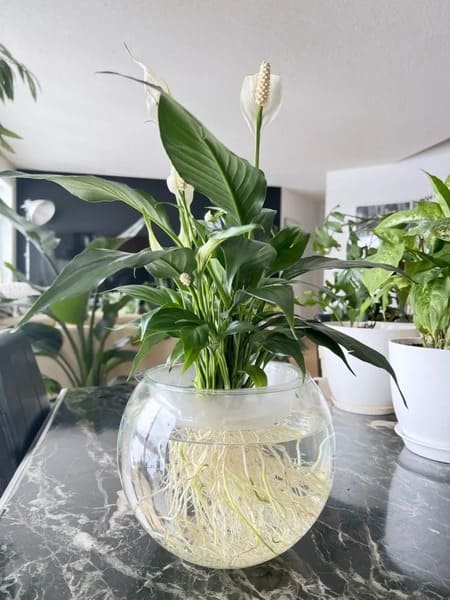 Image source: jaydeemahs
Image source: jaydeemahs
Peace Lily is a popular houseplant that showcases the combination of the white and green leaves looking quite classy. It is also easy to maintain.
14. Anthurium
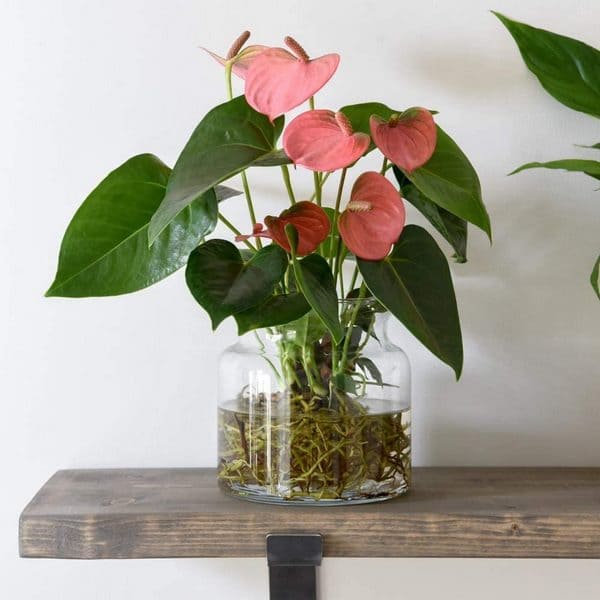 Image source: amazon
Image source: amazon
Anthurium blooms colorful bracts pop against dark green foliage making. It can do well in a transparent vase in the water.
15. Lucky Bamboo
 Image source: modernfarmer
Image source: modernfarmer
Lucky Bamboo is an easy-to-maintain plant that can grow well in any condition. It also is famous for its air-purifying ability you can grow.
GARDEN
15 Different Fern Types to Grow Indoors
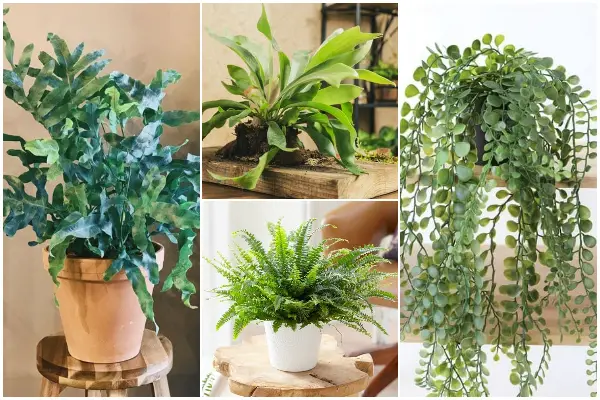
Want to bring tropical beauty to the home, indoor ferns are a lush and rewarding addition to any space. With vibrant, cascading fronds that stand out among other indoor plants, they are the top options for adding plant life and texture to your living space.
Here are the 15 Different Fern Types below that you will love growing. Like other houseplants, they also adapt to indoor conditions with minimal care.
#1 Kangaroo Fern (Microsorum diversifolium)
 Image source: rhsplants
Image source: rhsplants
Kangaroo Fern comes from Western Australia that features odd-shaped, long bright green fronds growing from creeping fuzzy rhizomes. To grow this fern, let’s give it moist soil and place it in a warm location.
#2 Boston Fern (Nephrolepis exaltata)
 Image source: etsy
Image source: etsy
Boston Fern is also called the sword or ladder fern, it has blue-green sword-shaped fronds that stay evergreen with arching gorgeous erect leaflets. This plant grows well in low light and just with minimalistic attention.
#3 Botton Candy Boston Fern (Nephrolepis ‘Cotton Candy’)
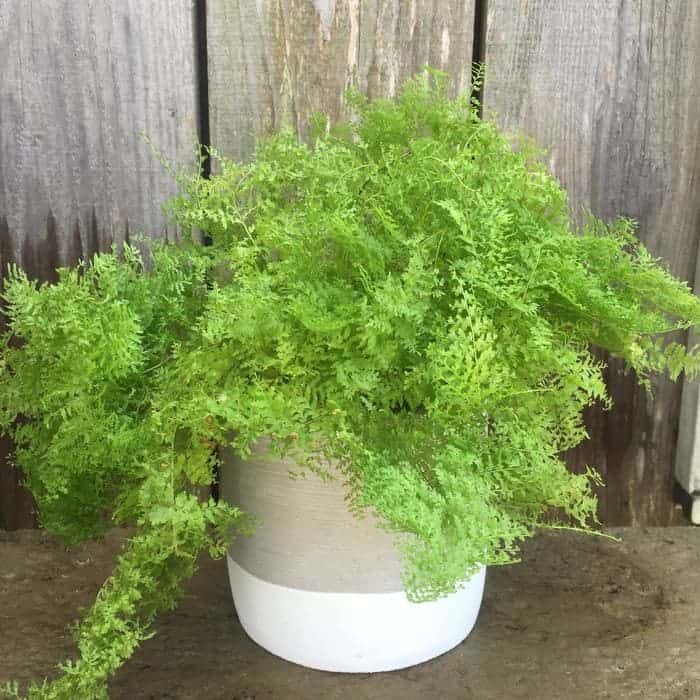 Image source: gatewaygardens
Image source: gatewaygardens
Cotton Candy Boston Fern does well both indoors and outdoors to show off fuzzy, soft, and bright green fronds. It looks great when grown in pots or hanging baskets. For its happy growth, give it in a shady location outdoors and on an Eastern direction window indoors.
#4 Bird’s Nest Fern (Asplenium nidus)
 Image source: springhillnursery
Image source: springhillnursery
Bird’s Nest Fern is an easy-care epiphyte variety as long as it gets enough humidity. In the right condition, it will bring leathery, strap-shaped, shiny, bright apple green fronds patterned in dark brown to black midribs and wavy edges.
#5 Blue Star Fern (Phlebodium aureum)
 Image source: instagram
Image source: instagram
Blue Star Fern is an epiphyte fern that adapts fast to the indoor environment. Its blue-green leaves are sometimes speckled with a silver or gray hue. To plant it indoors, give it well-draining soil, or an equal mix of perlite, pumice, or gravel.
#6 Lemon Button Fern (Nephrolepis cordifolia ‘Lemon Button’)
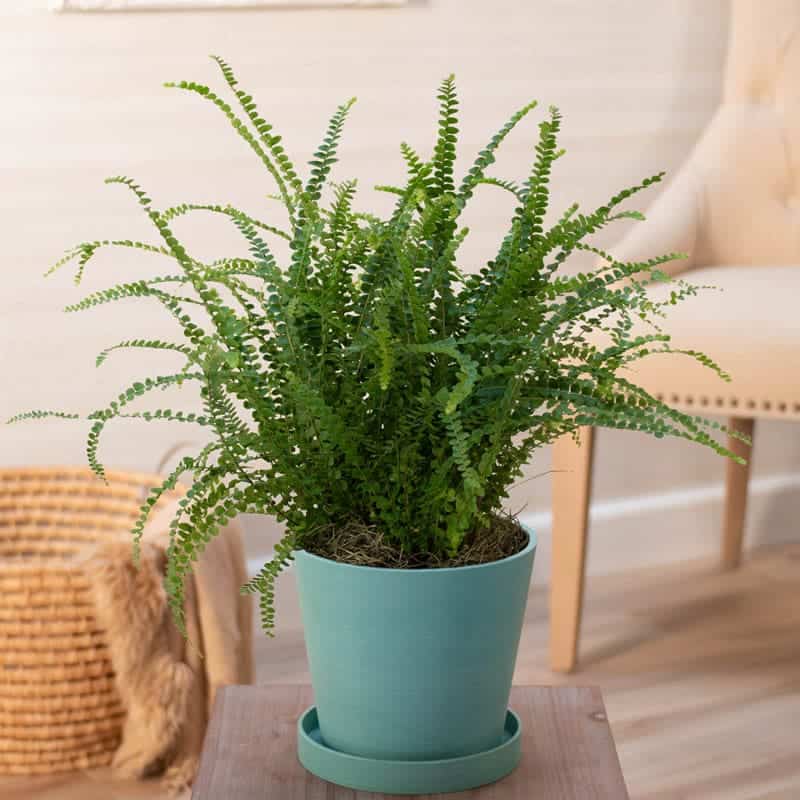 Image source: brecks
Image source: brecks
Lemon Button Fern showcases tiny, golden-green round button-like leaflets. When grown in hanging baskets or in terrariums, its long, arching leaves give a stunning look. For its optimum growth, give it medium to bright light and high humidity.
#7 Squirrel’s Foot Fern (Davallia bullata)
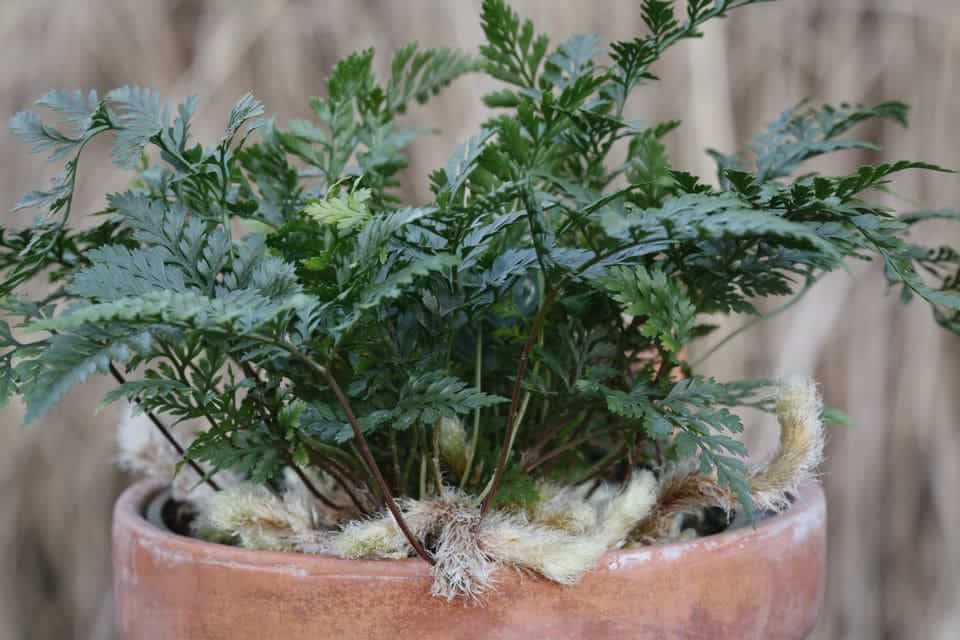 Image source: greencloudsolutions
Image source: greencloudsolutions
In the wild, the plant’s rhizomes of the Squirrel’s Foot Fern wrap around a tree to cling to them, hence the name. Place in indirect light and highly humid conditions, it will grow best to produce lacy and green foliage.
#8 Cretan Brake Fern (Pteris cretica)
 Image source: etsy
Image source: etsy
Native to Europe, Africa, and Asia, this evergreen fern has innate, flat green fronds with attractive variegation and wavy edges. The Cretan Brake Fern favors growing in a humid environment, so you can grow it in hanging baskets and place it in bathrooms or on tabletops.
#9 Maidenhair Fern (Adiantum)
 Image source: englishgardens
Image source: englishgardens
Maidenhair Fern is a popular fern that performs delicate, light, lacy, airy, bright green leaves on slender black stems, making it look great in hanging baskets. This fern variety requires slight moisture and bright indirect sunlight for its happy growth.
#10 Asparagus Fern (Asparagus aethiopicus)
 Image source: jensplantsandflorist
Image source: jensplantsandflorist
Asparagus Fern is one of the best hanging ferns that you can in baskets and macrame holders to enjoy its lacy-green foliage leaves. To grow this fern, give it humid locations and mist regularly, especially in summer.
#11 Japanese Holly Fern (Cyrtomium falcatum)
 Image source: plantify
Image source: plantify
Japanese Holly Fern shows off serrated, sharp-tipped long deep green leathery fronds that look like holly branches. This fern grows well both in partial sun and shade, so it thrives well indoors with minimum maintenance.
Native to New Zealand, the Button Fern is a beautiful, easy-to-grow fern. It displays round and small leaflets or ‘buttons’ on slim stems, hence the name. This fern variety adapts well to average indoor conditions.
#12 Rabbit’s Foot Fern (Humata tyermanii)
 Image source: hearthandvine
Image source: hearthandvine
Rabbit’s Foot Fern loves growing in bright, indirect light. It produces dark green, delicate, fine-textured fronds on fuzzy root-like stems (rhizomes).
#13 Staghorn Fern (Platycerium)
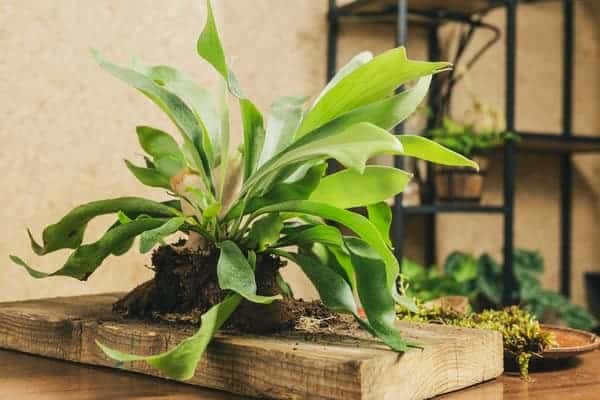 Image source: justhouseplants
Image source: justhouseplants
Staghorn Fern is a stunning epiphytic fern that offers exotic green fronds resembling the horns of an elk or male deer. It is easy to grow from propagating its side shoots or spores. It grows well in bright, indirect light, well-watered in a warm, and well-draining starter mix.
#14 Button Fern (Pellaea rotundifolia)
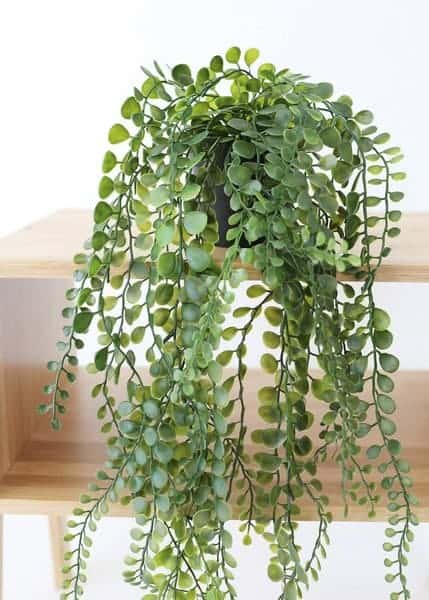 Image source: ifloralart
Image source: ifloralart
Native to New Zealand, the Button Fern is a beautiful and easy-to-grow plant. It produces round and small leaflets or ‘buttons’ on slim stems, hence the name.
#15 Christmas Fern (Polystichum acrostichoides)
 Image source: bigplantnursery
Image source: bigplantnursery
The fern variety offers glossy and green fronds that give the best color around Christmas time, so its name comes from this. Grow it in bright and indirect light for the best color. Also, water the plant once a week and keep the soil consistently moist.
GARDEN
15 Best Houseplants for Your Bathroom

The bathroom is always the most cleaned in the house but it is missed in decoration. Most people also think that the area of the bathroom is small that can’t set any kind of decoration or apply sophisticated architecture. However, adding a green touch by growing some of the best bathroom plants below will give your bathroom a fresh look!
1. Cast Iron Plant
 Image source: plantvine
Image source: plantvine
This incredibly tough houseplant, which appears to thrive on neglect, certainly lives up to its name. The cast iron plant can survive low light, infrequent watering, and extreme heat.
Nevertheless, for best results place this potted plant in low to moderate light – keeping out of direct sunlight, and water it regularly, allowing it to dry out before re-watering.
The cast iron will happily thrive in temperatures from 50 to 85 degrees.
2. Dracaena
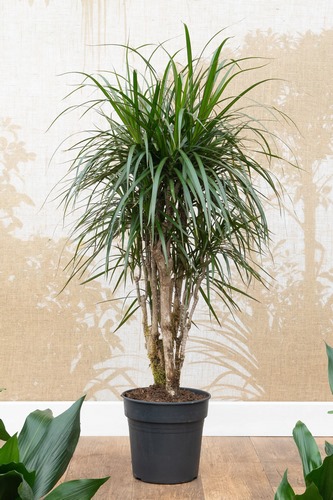 Image source: houseofplants
Image source: houseofplants
Dracaena plants, or dragon plants, are fantastic air purifiers which come in over 40 varieties.
This undemanding plant prefers light shade as its leaves will scorch if too bright; and a level of humidity not generally found in most rooms. Therefore, by placing your dragon plant in the bathroom, the lighting and humidity will prevent brown leaf tip and keep its greenery bright and flawless.
3. Orchid
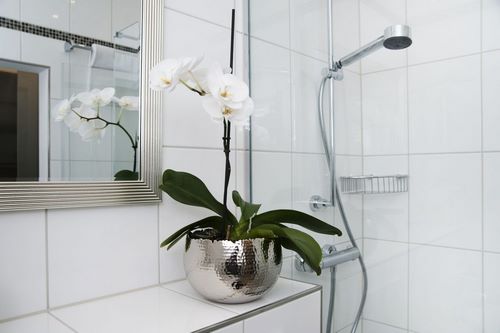 Image source: realsimple
Image source: realsimple
Give your bathroom a luxury spa feel with the addition of a subtle yet elegant orchid plant.
Place your orchid on the bathroom windowsill, where the indirect sunlight will provide adequate light but won’t cause leaf scorch; while the high humidity mirrors the flower’s natural environment.
It’s also a relatively compact flower making it perfect for smaller rooms, where it can be perched on the corner of the bathtub or next to the sink.
4. Pothos
 Image source: bobvila
Image source: bobvila
The golden pothos boasts beautiful marbled, heart-shaped leaves and is yet another low maintenance plant for your bathroom.
Ideal greenhouse conditions for this plant are very bright indirect light, high humidity, and warm temperatures.
However, as the bathroom ticks two out of three of these conditions, your pothos should do just fine indoors, although its leaves many not grow to the gigantic size they would with more light!
In order to stop the pothos getting out of control, and to save on space, hang it from the ceiling or high shelf.
5. Aloe Vera
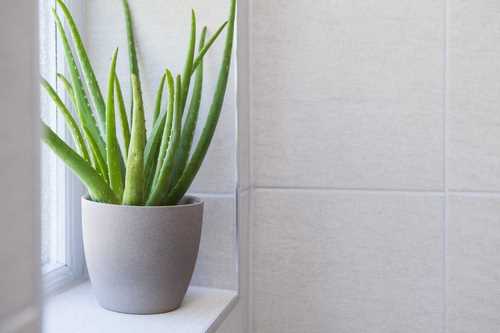 Image source: gardentabs
Image source: gardentabs
The aloe plant just keeps on giving! Not only is it known as the ‘plant of immortality’ because it is so difficult to kill, it is an incredibly useful plant to have around the home.
Aloe vera juice is bursting with vitamins and minerals, while the gel can be used as a topical treatment for minor cuts and burns, insect bites, dry skin and more.
This striking and healing plant should be placed close to the bathroom window and, because of its low water requirements, the humidity alone may meet most of its water needs!
6. Peace Lily
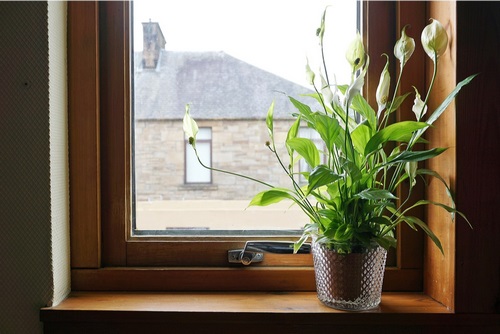 Image source: bustlingnest
Image source: bustlingnest
The peace lily is a striking flower, with glossy leaves and white blooms. It thrives in low light conditions, although it should be exposed to some indirect sunlight.
To simulate the natural humidity of the tropics, a daily misting or position next to a steamy shower is a must for the peace lily.
It’s another of NASA’s best plants for air purity, as it helps to filter out harmful benzene, trichloroethylene, and formaldehyde toxins.
7. Chinese Evergreen
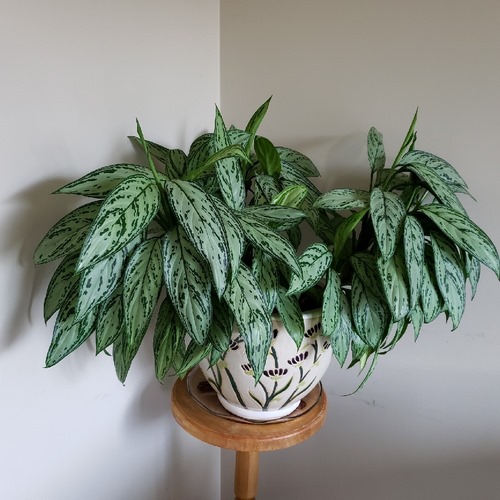 Image source: gardentags
Image source: gardentags
Boasting green leaves streaked with white or yellow, the tropical Chinese evergreen is one of the most durable plants you can grow, and has even been described as ‘almost foolproof’!
These plants thrive in medium to low light, or indirect sunlight. Although the Chinese evergreen prefers the warm temperatures and humid conditions of the bathroom, it’s flexible enough to tolerate other environments if necessary.
8. Philodendron
 Image source: sunrisespecialty
Image source: sunrisespecialty
This tropical indoor plant requires little in the way of care.
Philodendrons prefer the medium light intensity they would have on the jungle floor. If the light is too intense, its leaves will turn yellow; but if the leaves are widely spaced, it may need more light so you should consider installing fluorescent bulbs.
Although this hardy plant can tolerate average humidity, high levels promote lush, shiny foliage. Ideal growing temperatures are between 75 and 85 degrees F.
9. Bamboo
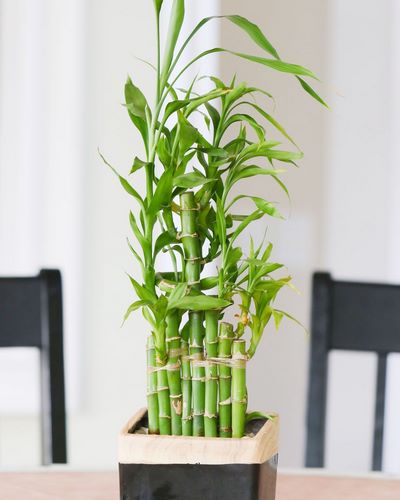 Image source: housebeautiful
Image source: housebeautiful
Lucky bamboo needs very little light to grow, and should be placed in low, indirect light.
It doesn’t even need any soil – simply pop the stalk into a container filled with pebbles and water. Change the water every two to four weeks.
Be warned that this is a fast growing plant, but you can curtail its growth by providing a physical barrier (such as a recessed shelf) or by shaping it regularly.
10. Snake Plant
 Image source: instagram
Image source: instagram
Also known as Mother-in-Law’s Tongue, the leaves of the snake plant grow upright, and feature yellow or white edging.
One of the hardiest houseplants, the snake plant can survive low light levels and is flexible in terms of heat and water.
The snake plant also filters some nasty household toxins from the bathroom air – including formaldehyde which can be found in cleaning products, tile grout, adhesives, and even some cosmetics!
11. ZZ Plant
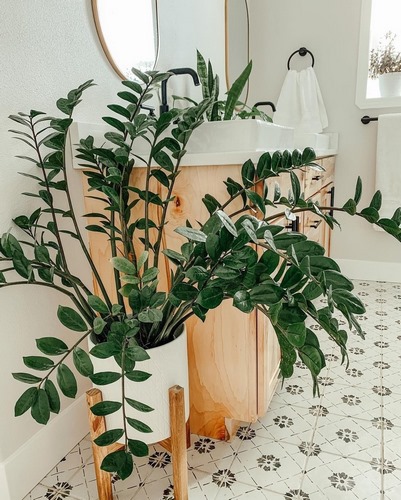 Image source: stylecurator
Image source: stylecurator
Dubbed the ‘eternity plant’ because it can tolerate quite a bit of neglect, the ZZ boasts beautiful oval-shaped, glossy leaves that will bring a fresh and vibrant feeling to any bathroom.
Although deep shade or direct sunlight don’t work for this plant, it can grow in most other light conditions such as a north, east or west facing window; and in a wide humidity range.
12. Spider Plant
 Image source: homedit
Image source: homedit
Commonly found in public spaces, the spider plant helps remove odors, fumes and around 90% of formaldehyde from the air.
This plant can grow in a wide range of conditions and requires little in the way of care. Because of this, they work well in bathrooms where they get either full sun or shade, although if plantlets fail to develop the plant is probably not getting enough light.
Allow the top layer of the soil to dry out between waterings.
13. Begonia
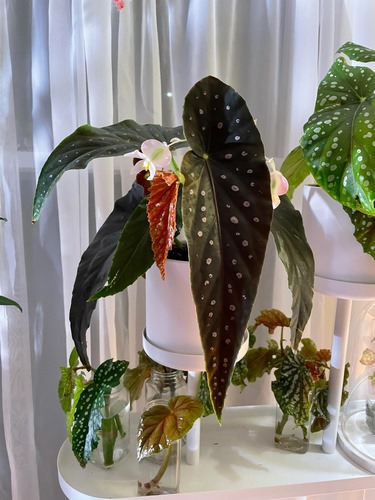 Image source: reddit
Image source: reddit
These pretty blooms do well indoors.
In fact, in many climates, they must be overwintered inside – with the bathroom being one of the best locations to do just this.
Begonias do best in fluorescent lighting, although they can survive when placed in window locations too (the exception being north-facing windows). They also require daily bathroom humidity or regular misting.
14. Ivy
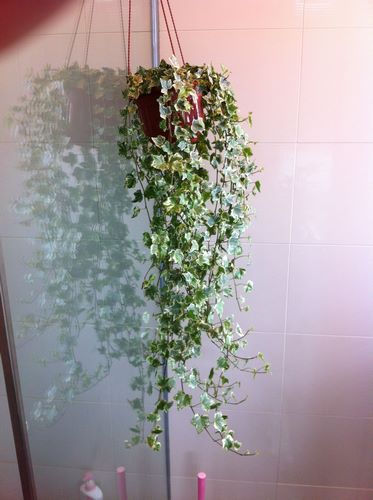 Image source: pinterest
Image source: pinterest
Ivy, particularly English Ivy, is one of NASA’s top air purifying plants. It can even help you keep the bathroom clean and hygienic by removing feces and mold from the surrounding air!
In bathrooms where space is at a premium, the ivy plant can be placed on a ledge or in a hanging basket where the leaves can elegantly trail down.
Needing just moderate exposure to sunlight, this evergreen vine enjoys the high humidity levels commonly found in bathrooms.
15. Boston Fern
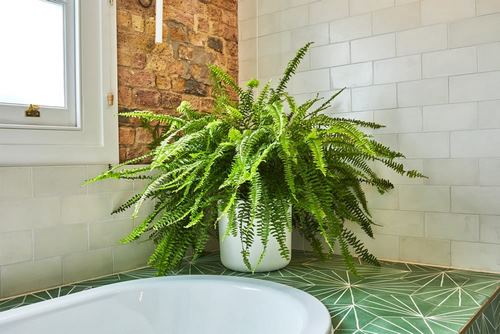 Image source: patchplants
Image source: patchplants
A popular variety of fern with frilly leaves and long, hanging fronds, the Boston fern is native to sub-tropical and tropical rain forests.
It grows best when placed on a windowsill or in a position which receives lots of indirect light. Humidity and temperatures of between 55 and 75 degrees are also important for your fern to thrive. In the growing months, the soil should be kept moist, but not saturated.
Other ferns also do well in bathrooms, including the Asparagus, Staghorn, and Bird’s Nest varieties.
-
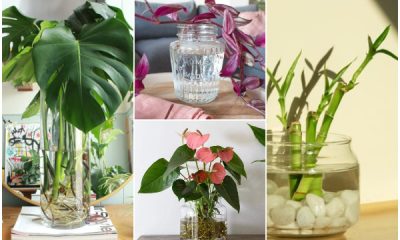
 GARDEN10 tháng ago
GARDEN10 tháng ago15 Houseplants That Grow Well in Vases with Water
-

 FUNNY1 năm ago
FUNNY1 năm ago20 Funny Grammar Fails That Will Make You Laugh All Day
-

 GARDEN1 năm ago
GARDEN1 năm ago4 Easiest Ways to Get Free Plants
-

 FUNNY1 năm ago
FUNNY1 năm ago30 Funny and Perplexing Photos That Make You Laugh All Day
-

 GARDEN11 tháng ago
GARDEN11 tháng ago30 Shimmering Side Yard Landscape Ideas
-

 ANIMALS1 năm ago
ANIMALS1 năm agoBritish Angler Caught Huge 67-Pound Goldfish in the World
-

 FUNNY1 năm ago
FUNNY1 năm ago30 Weirdest Things That People Came Across On The Subway
-

 ANIMALS1 năm ago
ANIMALS1 năm agoMore Than 3 Million People Baffled by Video of Strange Figure on the Beach



